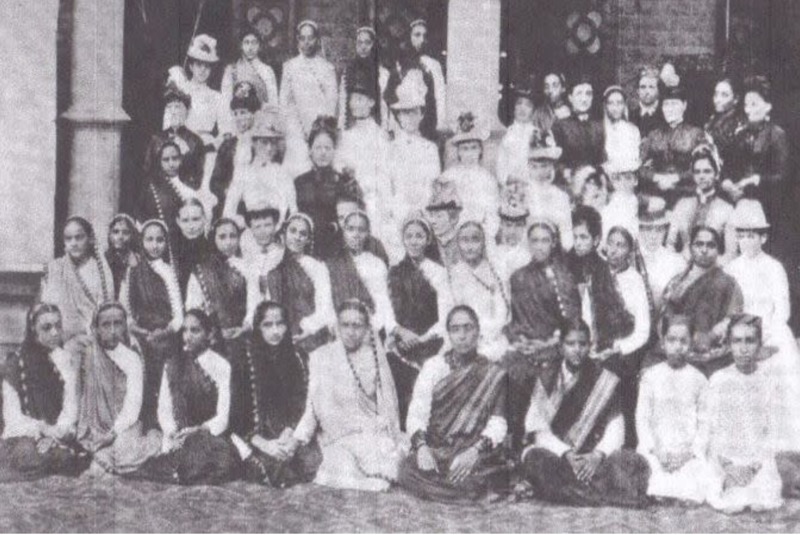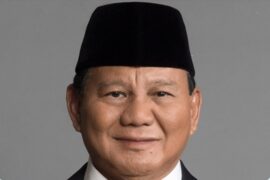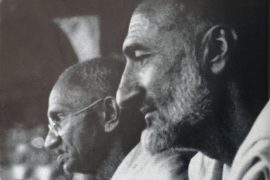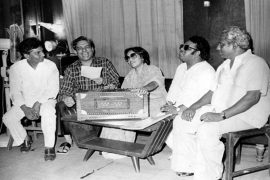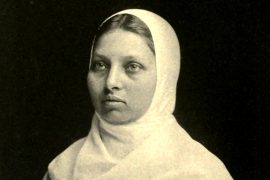On July 25, 1889, an advertisement appeared in the Times and Gazette of Bombay, India, asking young girls of all grades and nationalities to gather at Elphinstone High School to establish a women’s organisation comparable to those in England and America. It was an invitation from Dr. Emma Brainerd-Ryder, a New York physician.
The first meeting took place on July 10, 1889. Brainerd-Ryder invited the young and newly wedded women. It was an unusual gathering of 47 women who met at the Alexandra Girls’ School in the Fort district of Bombay. Brainerd-Ryder wanted them to share ideas, study, and learn about outstanding women from the past and today.
Dr. Ryder’s proposal drew a significant deal of criticism. Some missionaries said males would not allow women to join, while citizens of Bombay claimed that the caste structure in India would make it impossible to establish a club. According to writer-journalist Mary Richards Gray, Brainerd-Ryder had to explain her motivations in length to husbands and mothers-in-law. Only then did they agree to let the young ladies attend the meetings. It was the first time the ladies had used the rent-free quarters of Alexandra Girls’ School.
Previously, sessions were conducted at a doctor’s house. In the second formal meeting in October, the group acquired a formal name: The Bombay Sorosis. It was named after the professional women’s club in New York and shared by numerous literary societies in the US.
Jennie June Croly, or Jane Cunningham Croly, founded the first of these clubs, the New York Sorosis. Croly saw the need for a women-only meeting place when she and other female journalists were denied a formal dinner with visiting British writer Charles Dickens.
A slight breeze of change was blowing across from women in the Western culture. The Western women’s movement raised awareness regarding concerns of women, such as education, temperance, clothing reform, and voting rights.
The Sorosis clubs fueled this activity as meeting places for women to share ideas, establish alliances, and seek professional opportunities. Sorosis means ‘aggregate’ in Greek, which refers to a succulent fruit produced from the ovaries of many flowers.
When the Bombay Sorosis was formulated, the General Federation of Women’s Clubs (GFWC) established the first international club. ‘Tell them the world was created for women also,’ Croly, the GFWC Founder, congratulated the new addition. Her words became the motto of Bombay Sorosis.
Nobody could deny the impact of forming the first club of women in India. According to the Women’s Journal, the inaugural gathering was the ‘first literary organisation for native women in India.’
‘Family weddings, births and deaths – and for the rest the merest trifles – made up the sum total of their (India’s women) experience. History, deeds of heroism and the vivid life of today seemed scarcely to reach them at all. Mrs. Ryder felt it was her duty to open the world in some way to these women,’ wrote Margaret Boehme, author of the book Mosaics from India.
Thirty of the 47 women who attended the first meeting joined the group as founding members. By the time Dr. Ryder left India, the Bombay Sorosis had 200 members.
Life of Emma Brainerd-Ryder or Emily Brainerd
Born in 1842, Brainerd-Ryder obtained a teaching degree from the Oread Institute, a college for women in Worcester, Massachusetts. She married music professor George Wellington Ryder before relocating to San Francisco.
Brainerd-Ryder’s husband passed away in 1871, which prompted her relocation to New York. At the time, New York Medical College for Women was established. However, women were not permitted to practise medicine in New York hospitals until the early 1900s. She enrolled at the institution and graduated with a diploma in ophthalmology and oral surgery in 1875.
Dr. Ryder moved to Europe to practice as a physician at an Austrian hospital. She earned several certificates and passed numerous examinations with distinction. She specialised in the areas related to anatomy and surgery.
Dr. Ryder’s reputation in her field earned her a recommendation as a physician in the Russian Army to the Russian Tsar Alexander III. However, the American minister in St Petersburg denied her Red Cross delegation to the Balkan Mountains. He refused to provide her with a visa because he believed the mission was too risky for a woman.
Dr. Brainerd-Ryder then started her career in New York, advocating for women’s rights. She campaigned for clothing reform to make women’s attire less bulky and uncomfortable. It is believed that Croly’s work influenced Brainerd-Ryder. In 1888, she journeyed to India with the well-known feminist and scholar Pandita Ramabai.
When Dr Ryder arrived in India, she saw that the caste barrier acted as a continuous impediment to any work for women in the country. She resolved to attempt to eliminate it by gathering such.
After establishing Bombay Sorosis, Brainerd-Ryder established the Women’s Technical Education Association, a technical school for women. In addition to teaching professional skills like accounting, sewing, and tailoring, Dr. Ryder intended the school to instil a sense of self-reliance in young women.
Dr. Ryder attempted to persuade the girls’ family members again, and Ryder promised to pay the girls to convince them. According to Gray, men would show up to collect the money their wives had earned by attending courses every week. However, the training was lucrative; several of the ladies went on to work as bookkeepers.
Brainerd-Ryder advocated remarriage and girls’ education, which were growing concerns to reformers throughout India. Moreover, she fought against child marriage. After leaving India in 1892, she published her writings, The Little Wives of India, which addressed the issue of child marriage.
The book did not have wide sales, but Brainerd-Ryder talked about it on several occasions, which led to the creation of Little Wives of India Circles throughout Australia and New Zealand. She used to compare the life of child brides to the experience of enslaved people on the American plantation. She wrote:
A man may be a vile and loathsome creature; he may be blind, a lunatic, an idiot, a leper; he may be fifty, seventy or one hundred years old, and maybe married to a baby of five or ten who loathes his presence, but if he claims her, she must go, and the English law for the ‘Restitution of Conjugal Rights’ compels her to remain in his power and imprisons her if she refuses.
Dr. Ryder finally returned to the US in 1896. She passed away in Roxbury, Massachusetts, in 1913 at the age of 71. Throughout her life, she spoke up for the rights of women and against child marriage in India.
-30-
Copyright©Madras Courier, All Rights Reserved. You may share using our article tools. Please don't cut articles from madrascourier.com and redistribute by email, post to the web, mobile phone or social media.Please send in your feed back and comments to editor@madrascourier.com

